30 Yoga Photography Tips

30 Yoga Photography Tips and Ideas
Are you dreaming of taking perfect and sensitive yoga photography? Here is some simple tricks to help you improve your skills and be able to compete with professionals.
1. Do Your Research Before the Yoga Photo Session
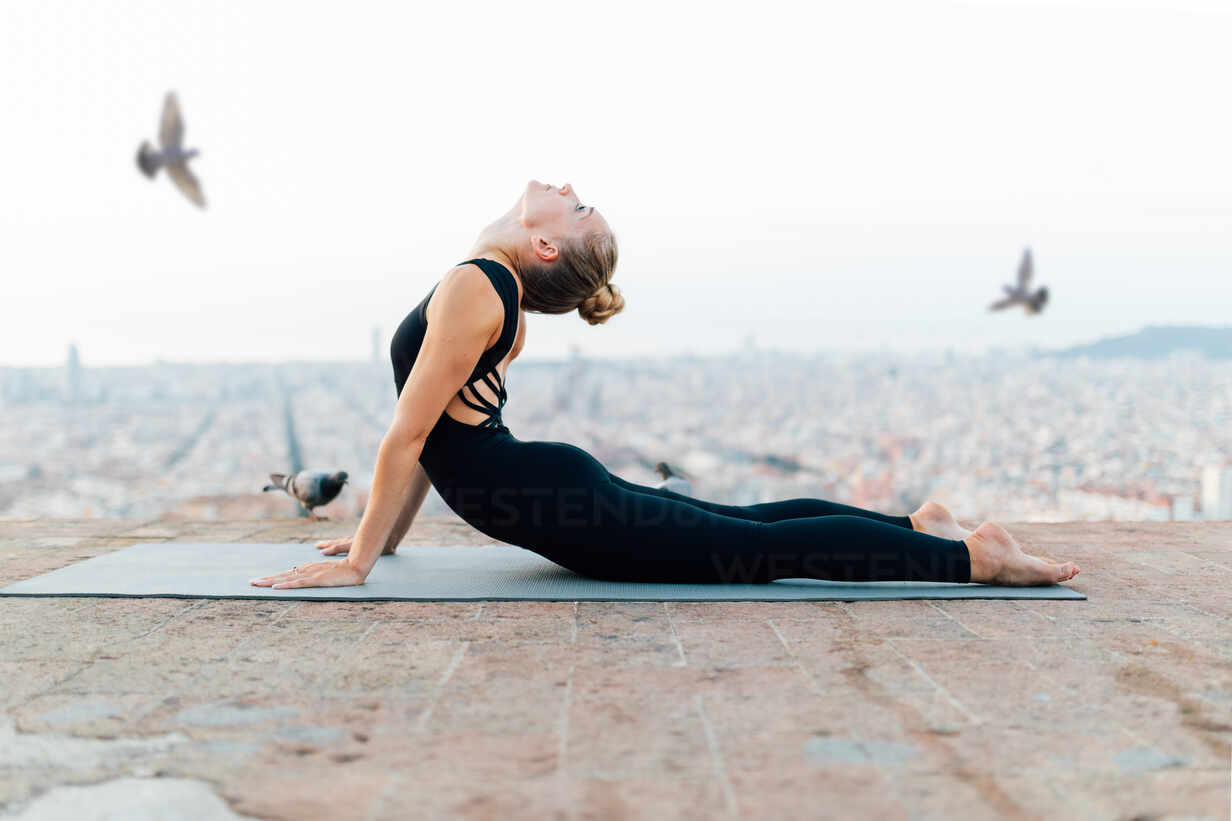
There is no way to do good yoga photography without knowing what it really is. There are plenty of ways to do it depending on your preferences.
You can follow yoga video tutorials on YouTube, sign up to online yoga courses, read books, or even attend classes.
I recommend you watching a film called “On yoga the architecture of peace”. Any kind of research will bring you closer to perfection in yoga photography.
2. Pick a Good Location
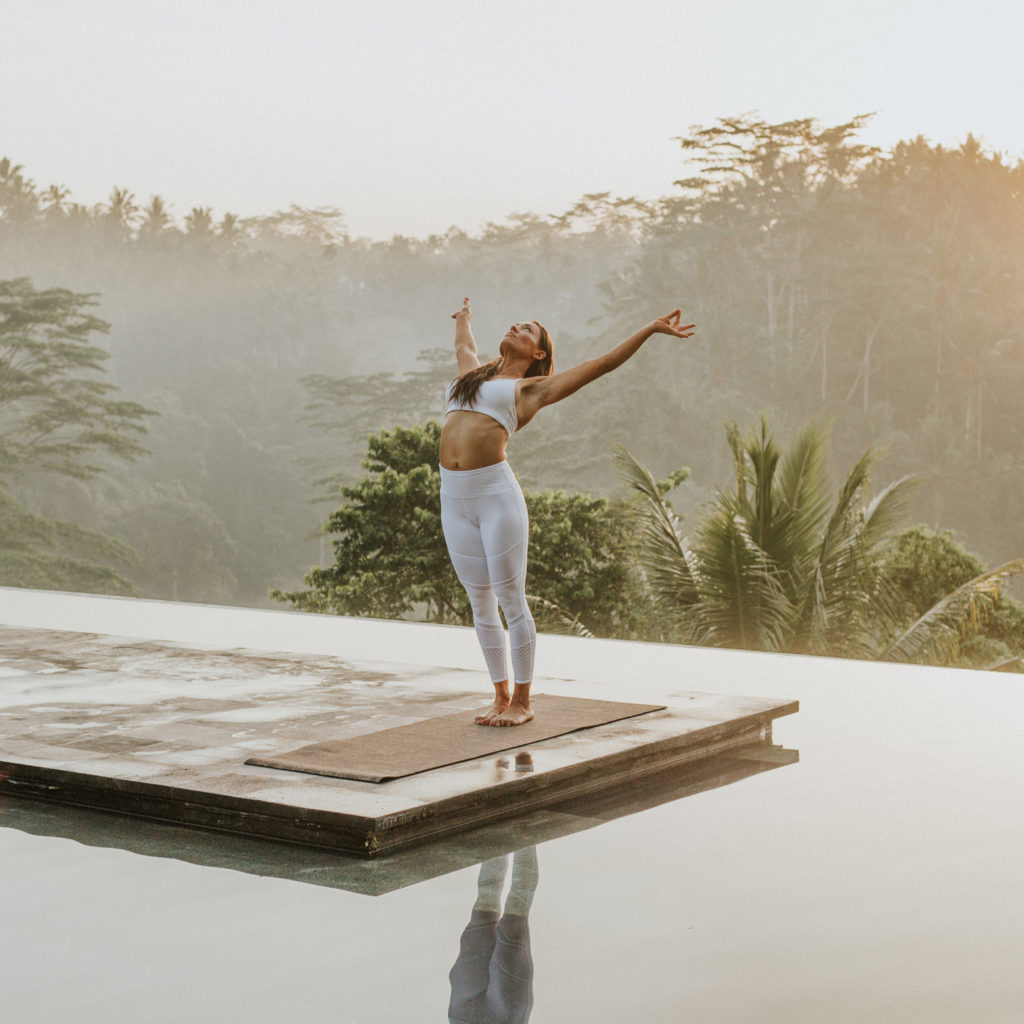
Yoga can be practiced anywhere and that subsequently makes any place available for shooting. You can evoke many emotions by shooting in nature, making a forest or beach the stage of your session, and then photos will radiate the atmosphere of serenity and freedom cherished by many yogis.
Another resonating background is an urban area, which makes the pictures of yoga models more dynamic and attention-grabbing. My recommendation is to use the 500px application for iOS or Android when you find yourself in need of a new interesting location.
For the USA, I would suggest such great places like College Park Yoga, Warrior ONE Yoga & Spin, Sagamore Hill, Golden Gate Park, Beach Yoga in Marina del Rey. There is even a list of America’s top 10 yoga towns for you to plan a great photoshoot at.
3. Keep the Mat as Clean as Possible

Most photo sessions require the mat and checking that it stays clean will make your image editing less frustrating. A yoga model is likely to pose barefoot and that will inevitably cover the mat in footprints and other spots as you’re taking images.
I take a spray bottle with a mix of water and vinegar and a clean towel to deal with those. As you’re switching poses, notice when the mat becomes untidy and take a minute to wipe it. Your model will find you’re being professional and serious dealing with small details.
4. Wait for the Sunset to Create a Masterpiece

That brief time before the sun goes down is the best to have stunning photos. You can use the simplest asanas and let the setting sun play its magic. If the sun is right behind you, avoid letting your own shadow appear in the frame.
Make use of the PhotoTimemat to know exactly when the sun sets or rises in your place.
5. Vary the Distance from Your Model

Don’t glue yourself to one place, move around and do yoga photography that tells a story. Step away from the model and use a wide-angle lens to include a vast background in the frame. Then step closer and concentrate on the model, almost filling the frame with her body in an asana.
Take a few medium shots to really concentrate on the model but also take a few close-ups for an even more dramatic effect. This doesn’t necessarily mean you need to shoot her face, there are other distinctive details to concentrate on. Shoot mala beads, tattoos, or the tensed muscles, the beautifully twisted arms.
- Learn more about how to take portraits.
6. Take Different Views

Finding a good position and working from it isn’t the best way, combining different perspectives will work better here, emphasizing the dynamics of the yoga practice. If you’re doing group Bikram yoga photography, for instance, don’t try to single people out in the frame, feel free to shoot them on the background of other yogis. This will show a great group spirit and atmosphere.
If your camera has a tilt screen, make use of it by taking overhead shots of the group. For a different effect, change perspective and shoot from the waist up, which will look especially good with certain poses.
7. Clothes Matter

The clothes are not that important during the yoga session but they do play a big role in the photo session. Having two outfits might make the outcome more interesting and variable.
Quite possibly, your yoga girl photo sessions are a way to promote a certain brand, which is why you need to pay additional attention to taking pictures in all available outfits. That obviously means that some changing time needs to be scheduled in advance.
For really fascinating pictures, make sure your model has yoga bras, yoga pants and socks in her collection.
8. Use All Categories of Asanas in a Yoga Photo Shoot

A successful photo session produces a variety of images, so be sure to capture several types of asanas. A well-organized session is interesting, active, and full of impressive scenes, apart from being the best way to get yourself recommended in the field.
Use the Yoga Anatomy Coloring Book to learn more about asanas and how they are named if you don’t feel confident.
9. Let Your Models Check the Photos
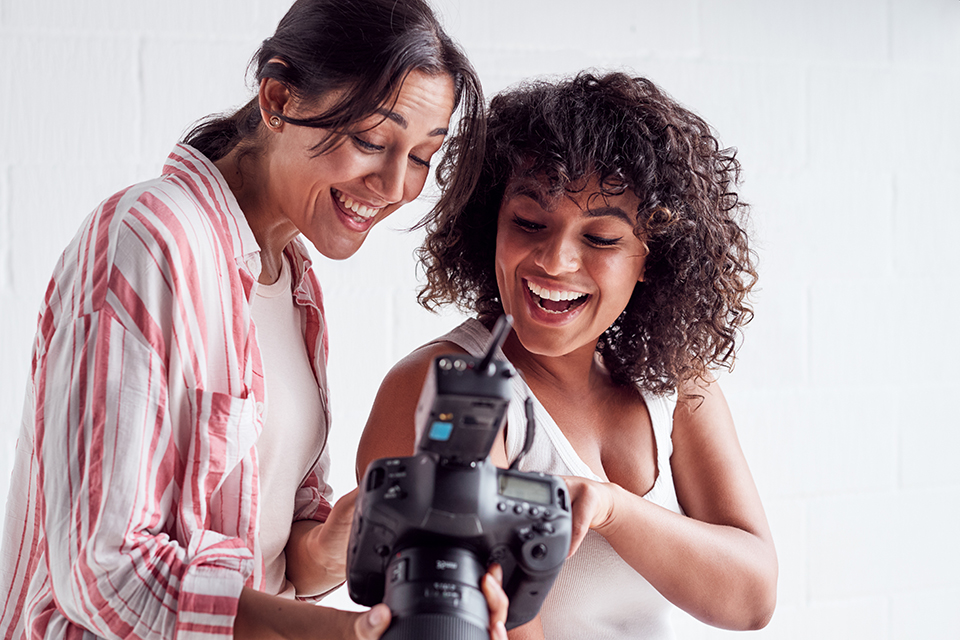
Here, showing unprocessed photos is actually useful to you because those, who are serious about yoga will not use misrepresenting or failed pictures. You should always let the model control whether one pose is captured correctly before you go to the next.
If you are an experienced yoga photographer, you will know what aspects to control, helping the model to align herself/himself and build the pose to look good in the shot. For those, who know little about yoga, the best thing would be to have the model explain what she/he is expecting and how you could help her/him pose.
10. Leave Picture Post-Processing to Professionals
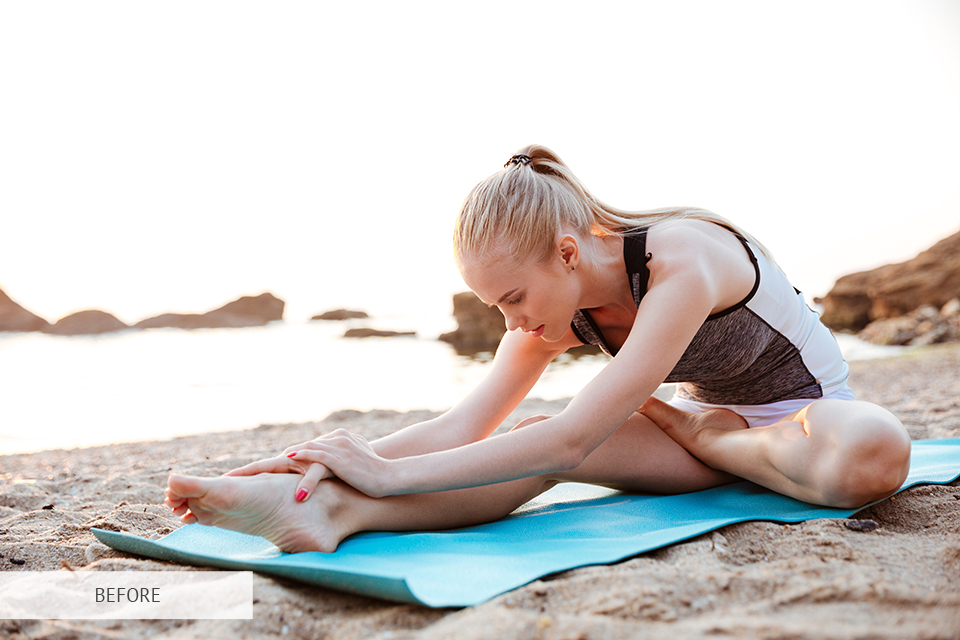
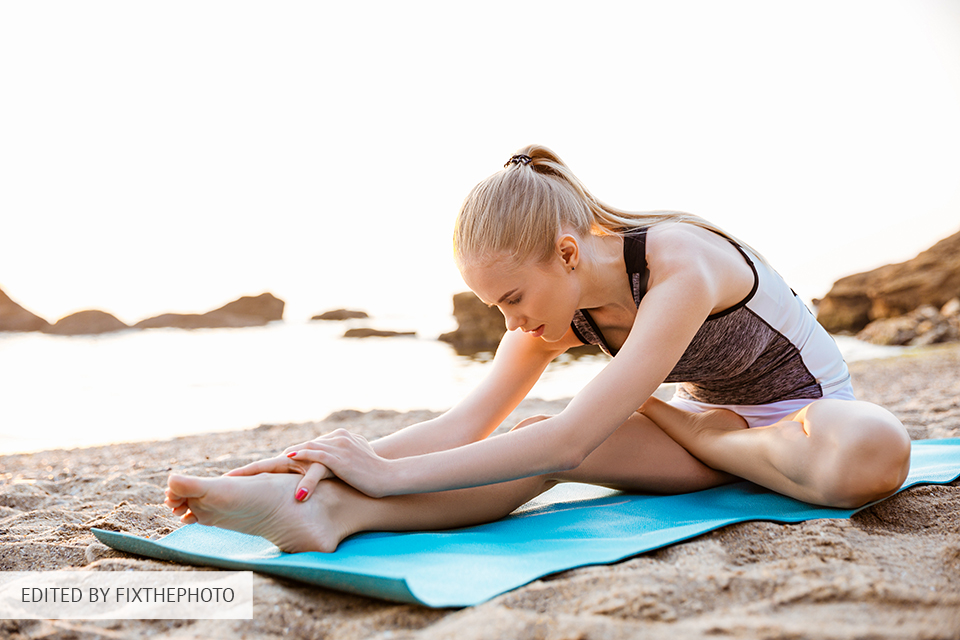
To get the highest quality images, prepare to do lots of editing in Photoshop or Lightroom. Otherwise, you might want to delegate that task to professionals like FixThePhoto who will make sure that your model, her pose, and the picture’s background look flawless.
11. Pick the Wide-Angle Lens for Yoga Images
Any photographer normally hasafavorite lens but, in this case, you should really work with the best lens for yoga photography even if you don’t fancy using it. For that, make sure to get a good 16-35mm lens because among its other benefits is the capability to fit more of the scenery and the people into the frame.
Additionally, with this lens, focusing on the foreground objects is very convenient and produces a great result.
12. Use a Tripod

This is an obvious way outto make your photos sharp. Also, you won’t need to worry about having shaky hands because of having held your camera for too long, which is especially true when waiting for the model to get into apose with your bulky gear in readiness. A second benefit is the ability to pan through the location.
- Read more budget tripods.
13. Get a Flash
If possible and allowed, use a flash. Combine your flash with long shutter speed and your artistic yogaphoto will turn out stunning! With slow shutter speed, you will get somebackground blur, but your subject will remain sharp.
- Read more about the best camera flashes.
14. Use These Shutter Speed Values

Since yoga poses are normally static, keep shutter value between 1/250 and 1/125. In case you are not following the advice to use a tripod, avoid going any lower than that.
15. Try These Aperture Values
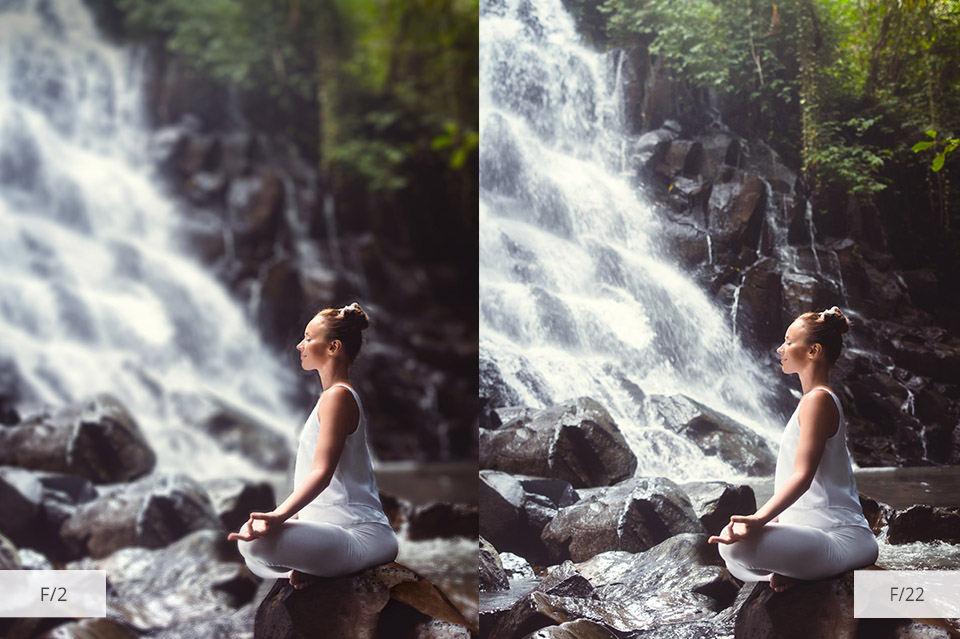
Choose an aperture setting depending on your desired level of background blurriness. If you want to keep everything in focus, go for a narrower value like f/22.
For detaching your model from the background set the aperture wider (f/2.2 for example) and then the distant objects will get blurred. Make sure there is no body movement, though, because the model might become blurry in that part as well.
16. Remember about Focus
To make things faster, use the autofocus for yoga photography. The static asanas can be easily captured with the help ofCanon “One Shot” or Nikon “AF-S” focusing mode. They all work in a similar way, requiring you to press the shutter button half-way to get the focus set before shooting.
If you are, instead, capturing a yoga flow in motion, go for a continuous focus. The modes would be called AI Servo or AF Continuous respectively. The focusing also occurs at half-pressing the button.
17. The Lotus Position
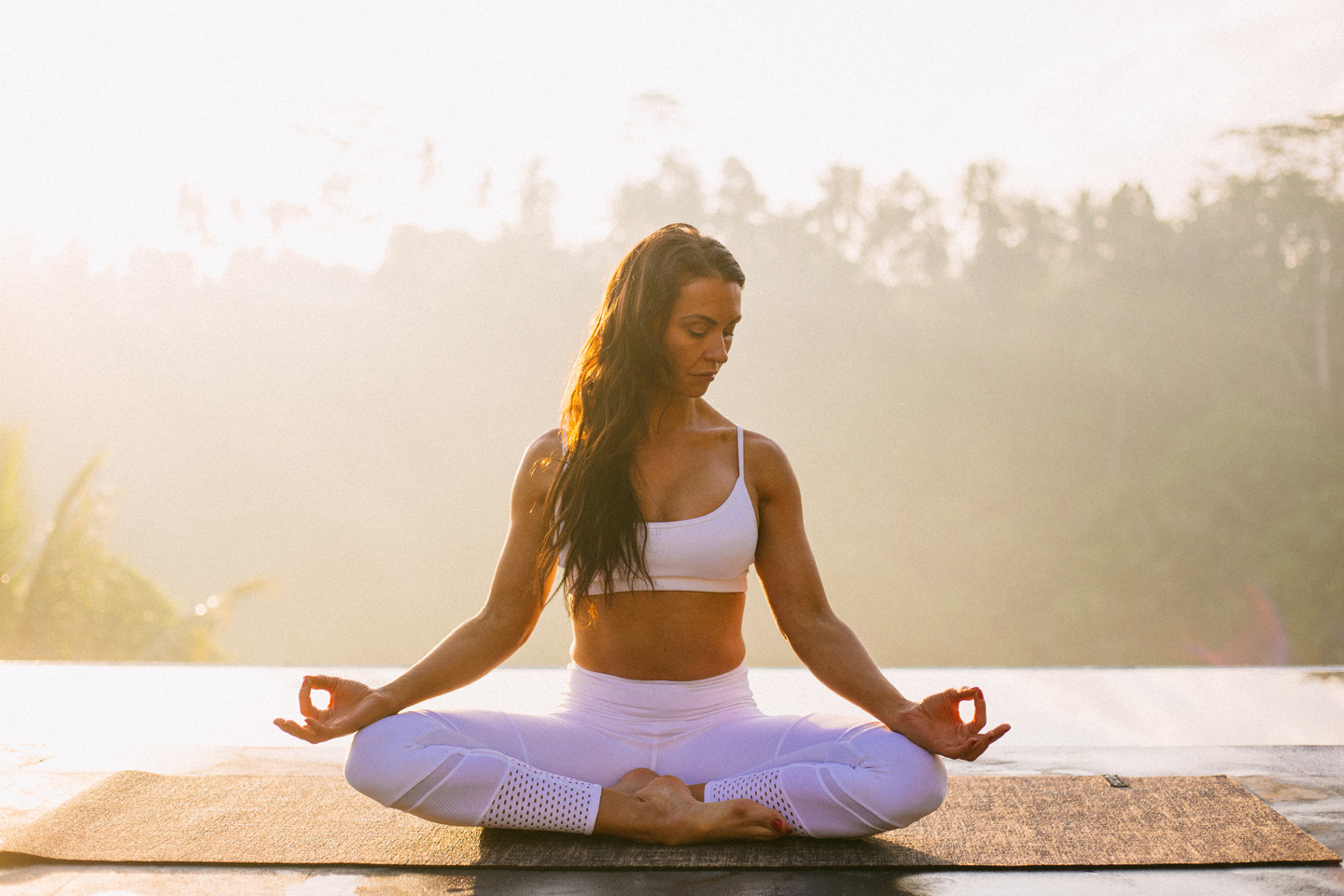
The Lotus model yoga pose is a calling card for yoga. This pose can look especially impressive in nature, for instance on the seashore at dusk.
18. Back-Bending Pose

See if your model can perform the bridge pose. It looks very impressive since all the curves of the body are visible. Find a beautiful background and the asana will produce a mesmerizing effect.
19. Standing Back to Camera
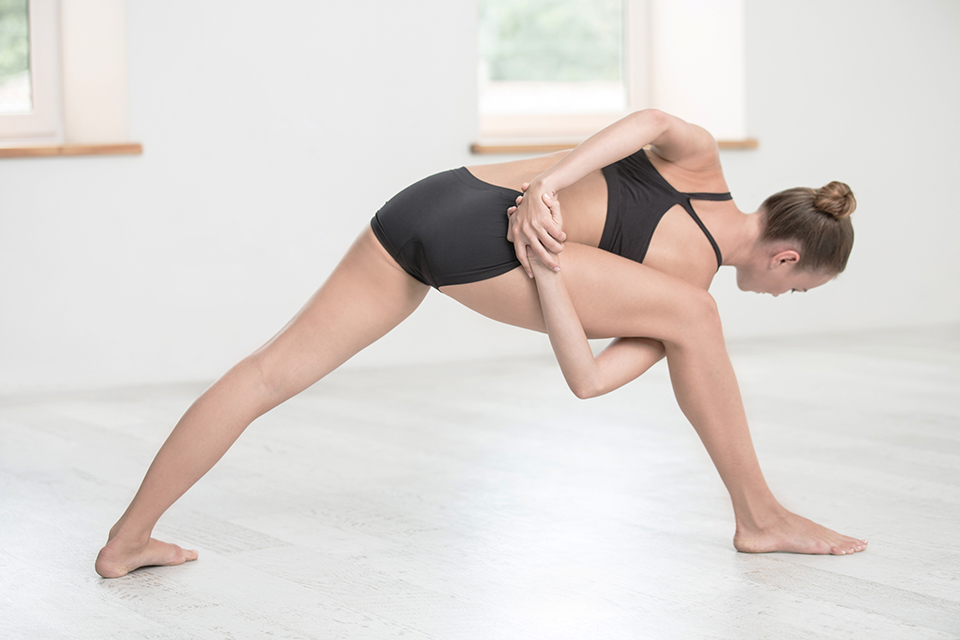
Showing a back to the camera might also look intriguing, especially with women silhouettes. The image will evoke unusual feelings in the viewer because of a different look. Let your model do an asana and control the light in the meantime to let it envelop her nicely.
- Find more portrait photography poses.
20. From a Height

The yoga poses photography can benefit from top-down frames, especially if you want some emphasis on the some asanas of the yogi. You can play with shadows and accentuate some details of the practice or the model’s distinctive features.
21. Get Close

Properly performed asanas require working with your whole body to “feel” them. Still, getting close-ups of various body parts might help you put more expression in the photos. Put an extra accent on hands, feet, back, or whatever feels more expressive.
- Find more info on female poses.
22. Playing with Shutter Speed

There are plenty of tricks to try in yoga photography like increasing the shutter speed and blurring the motion, which would have a deeper impact on the viewer if you set a neutral density filter and try the same movement with a lower setting. With that, you can use a tripod and ask the model to keep completely still for dramatic contrast. Otherwise, you can have her move as well and play with the harmony of motionless.
23. Create a Double Exposure for Amazing Results

Pictures with double exposure can have two or more shots blended together. This can be used as another way of capturing transitions of a yoga flow. You can either add dynamics to one position that you capture or instead display several asanas in one image. It might seem difficult to achieve but in reality, you will only need two or more images, editing software with a layer opacity tool and some skills in using it.
- Read more about creating Double Exposure in Photoshop.
24. Take Black and White Photos
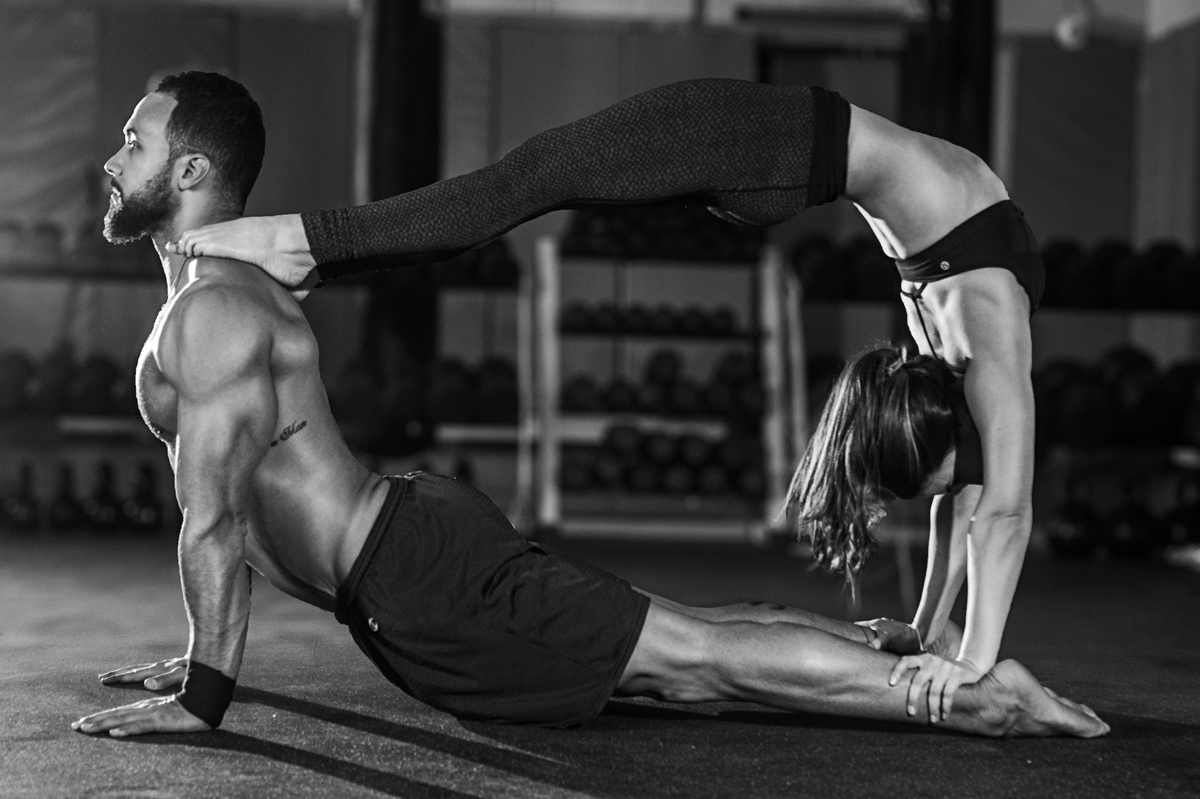
Try a different view with monochrome images that emphasize the light transitions in the frame. It only takes removing the colors to let you see clearer what big influence the light levels have.
25. Street Style

A striking effect can be produced by urban yoga photography which highlights the gracefulness of the body on the background of rigid urban constructions.
You can play up the outfit, use it as a distinctive pop of bright color or a calming spot of neutral shades. Pay attention to how the outfit is sitting on the model but don’t concentrate solely on that, put an accent on the yoga element and emphasize it with the cityscape.
- Find out more creative photography ideas.
26. Light and Shadow Interplay

A tool that can really help you make a photo of a girl doing her yoga practice differently is a light source. They can be different and create effects conveying a certain mood, like colorful stained-glass spots of a lamp or somber shadows cast by some objects.
Powerful images can be taken with a light stencil set to outline the bone and muscle definition on the yogi’s body. Such images would immediately look more special.
27. At the Usual Training Place

You can plan a photo session on a nice sunny day and just ask a yogi to follow the usual routine to get some nice and authentic images. Be prepared to move around and shoot as the positions are flowing one into the other.
28. Photos at Home

The girl can do some relaxing poses on the sofa or stretch on the floor when you practiceindoor yoga photography. The latter would look more impressive if you shoot from the floor itself, and the image may look more playful if the girl stretches her arms forward or rests her face on her hands.
29. Shoot Yoga Couples

You can also shoot a loving couple together. A photo session will be especially interesting if the woman is pregnant or she has a small child. It will turn out as a very beautiful family photo. Such an idea can be implemented in the studio or in nature (in the forest, in the park, by the lake)
- See more couple photo poses.
30. Series of Shots
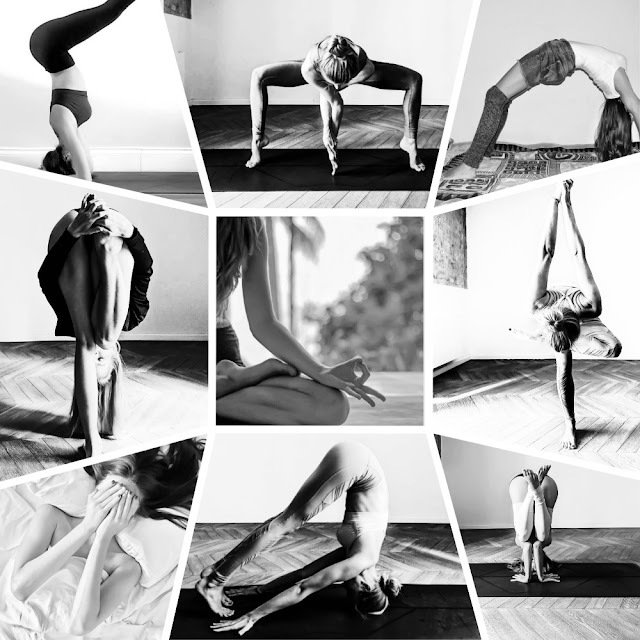
This can be great for shooting yoga flows when you capture the transition from one pose to another by shooting in the burst mode. A series of pictures might look more interesting in dynamics than just photos of static poses.
Best Yoga Photographers
This type of photography is rather far from being widespread but there are still some professionals that you can get inspiration from. In this section, you will see some renowned professionals, who do beautiful and original yoga photography art.
LilytotheWorld
 This community can tell you a lot about yoga, especially the combination of Lila Yoga and Ayurveda. From here, you can get into some classes, either private or in a group, get some massage or healing practice, participate in online writings or tutorials, follow guided meditations or vlogs and otherwise get involved in the yogi lifestyle.
This community can tell you a lot about yoga, especially the combination of Lila Yoga and Ayurveda. From here, you can get into some classes, either private or in a group, get some massage or healing practice, participate in online writings or tutorials, follow guided meditations or vlogs and otherwise get involved in the yogi lifestyle.If you’re not interested in all the above, you can just use this resource as a yoga photography book that will give you new inspiring ideas that you would have struggled to come up with yourself.
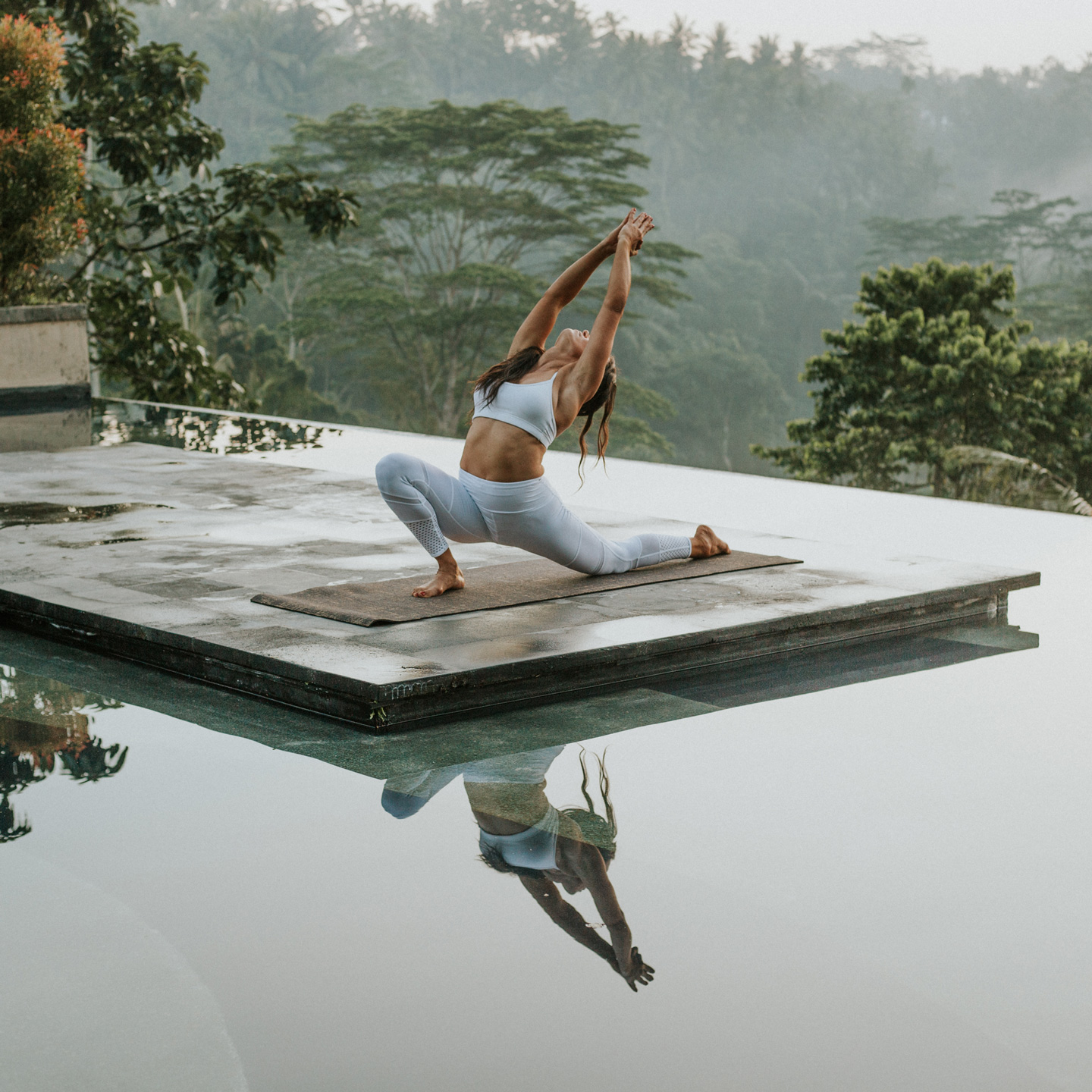
Amanda Manfredi
 She is now an Ashtanga and AcroYoga teacher based in Southern California. It’s been almost a decade since she started following some prominent instructors of the “At One Yoga” studio in Phoenix, Arizona, trying out the different styles of yoga. The indoor and outdoor pictures she takes are vibrant and truly impressive, showing her skills at manipulating lights and playing with contrasts.
She is now an Ashtanga and AcroYoga teacher based in Southern California. It’s been almost a decade since she started following some prominent instructors of the “At One Yoga” studio in Phoenix, Arizona, trying out the different styles of yoga. The indoor and outdoor pictures she takes are vibrant and truly impressive, showing her skills at manipulating lights and playing with contrasts.
Tony F Photography
 This photographer from Atlanta takes a special interest in yogis and visits various large festivals held in different countries. Having an incredible sense of space and symmetry, he can incorporate those to take stunning frames. His other achievement is a featured article in an online magazine publication called VoyageATL.
This photographer from Atlanta takes a special interest in yogis and visits various large festivals held in different countries. Having an incredible sense of space and symmetry, he can incorporate those to take stunning frames. His other achievement is a featured article in an online magazine publication called VoyageATL.
Robert Sturman
 Based in California, he takes incredible shots ranging from a photo of a yogi on a rock in the ocean to an image of a bunch of Kenyan orphans doing their practice. His genius has been recognized by a number of invitations to participate in shooting such incredible events as the 47th Annual GRAMMY Awards, the United States Olympics of 2008, and the FIFA World Cup two years after. New York Times has covered his yoga photography outdoors and indoors in 2 articles.
Based in California, he takes incredible shots ranging from a photo of a yogi on a rock in the ocean to an image of a bunch of Kenyan orphans doing their practice. His genius has been recognized by a number of invitations to participate in shooting such incredible events as the 47th Annual GRAMMY Awards, the United States Olympics of 2008, and the FIFA World Cup two years after. New York Times has covered his yoga photography outdoors and indoors in 2 articles.
Gabriela Fearn
 With a higher education in Arts, she went to Sydney where she ended up following a long course on teaching yoga. After that, she added some knowledge of conducting Pregnancy Yoga and Yin Yoga sessions. Combining all that knowledge, she became passionate about yoga photography. Her works aim at showing the amazing community of yoga, the happiness and variety it can bring into lives.
With a higher education in Arts, she went to Sydney where she ended up following a long course on teaching yoga. After that, she added some knowledge of conducting Pregnancy Yoga and Yin Yoga sessions. Combining all that knowledge, she became passionate about yoga photography. Her works aim at showing the amazing community of yoga, the happiness and variety it can bring into lives.
Freebies for Editing Yoga Photography
To make your yoga photos even better, I have prepared these free plug-ins.
Fashion
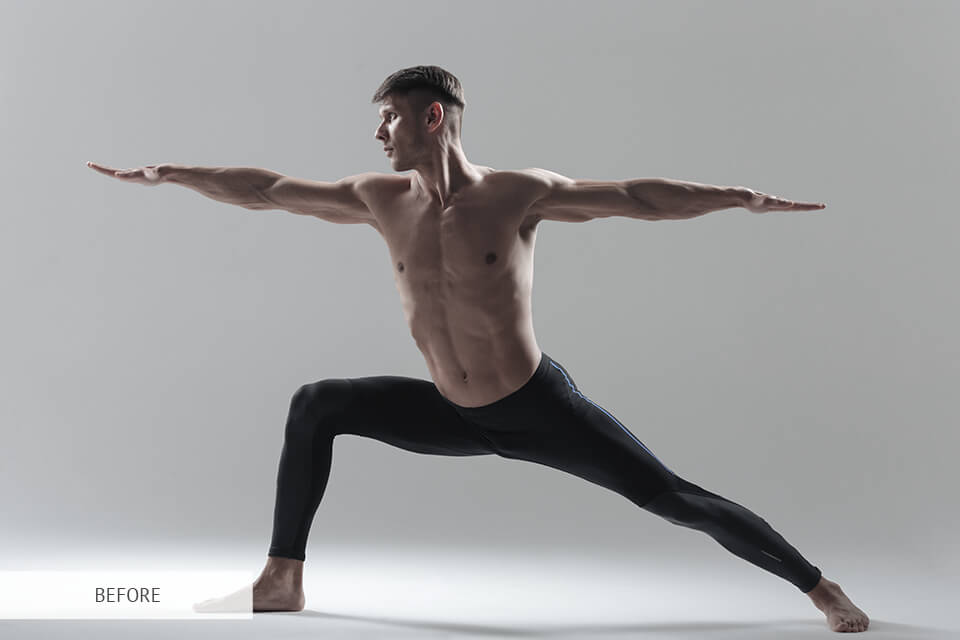
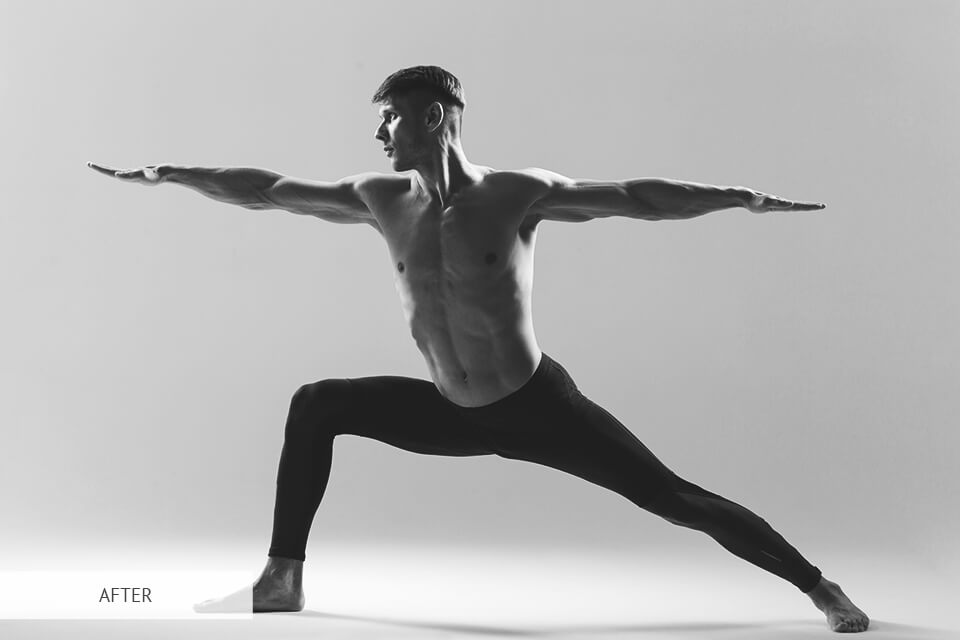
This tool is an easy way to make beautiful and well-balanced monochrome pictures with the least amount of effort. The results will have a lot of detail and texture pleasing to the eye.
Double Exposure


It is hard to find an easier way of blending together a portrait in a yoga asana and a cityscape. More importantly, the result looks realistic.
Contrast


A pop of contrast makes the colors in the image really shine through. Plus, it will help fix exposure even in those gloomy photos where there wasn’t enough natural light.
Sun Shine
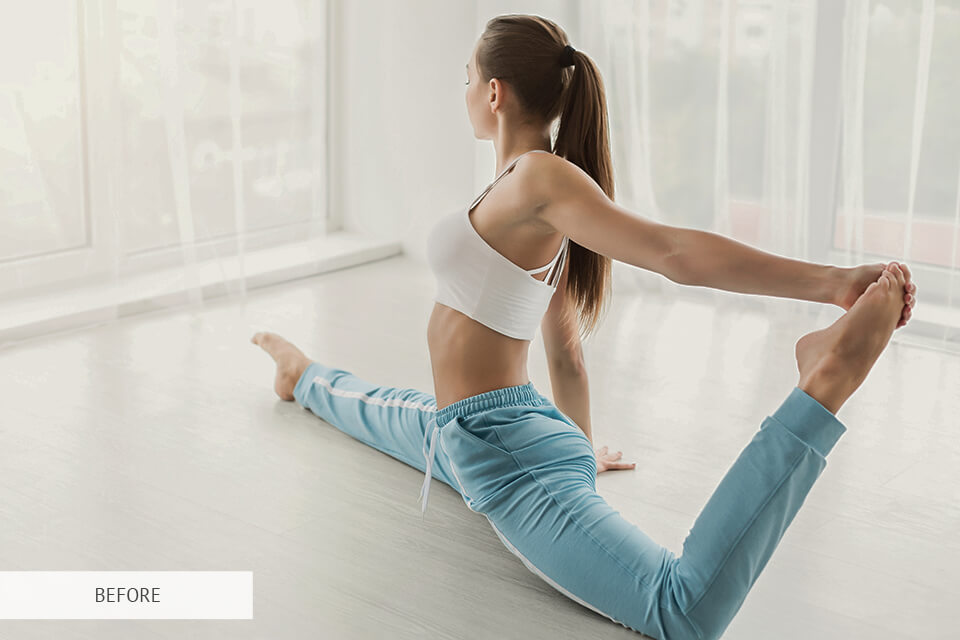
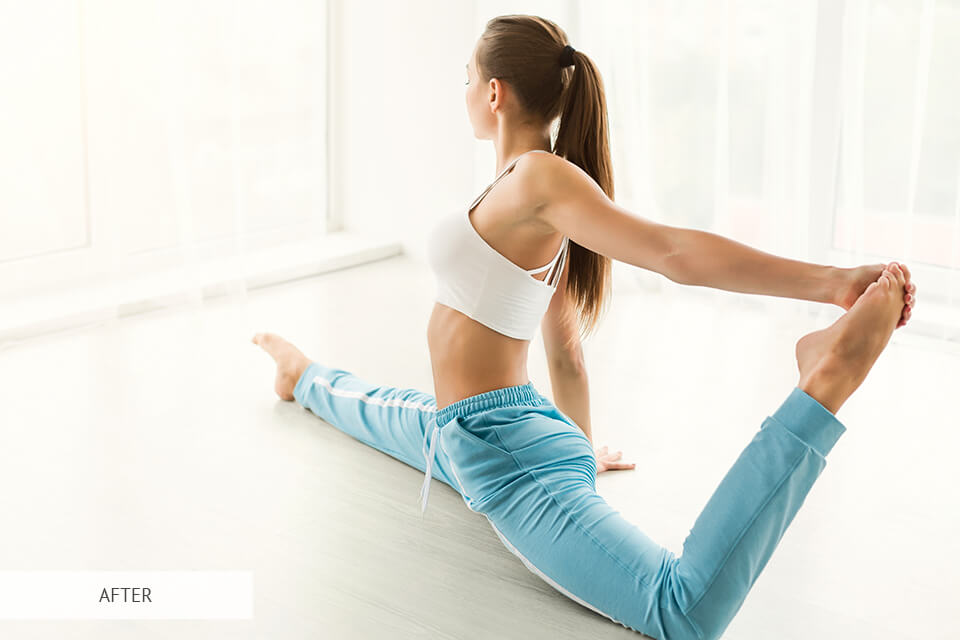
If the colors are too bright and the intended effect is ruined by them, this preset will noticeably soften them. It brings down the clarity, pulls up shadows and enhances color purity and red tones, making colors look more leveled and less distracting.
A Touch of Bronze
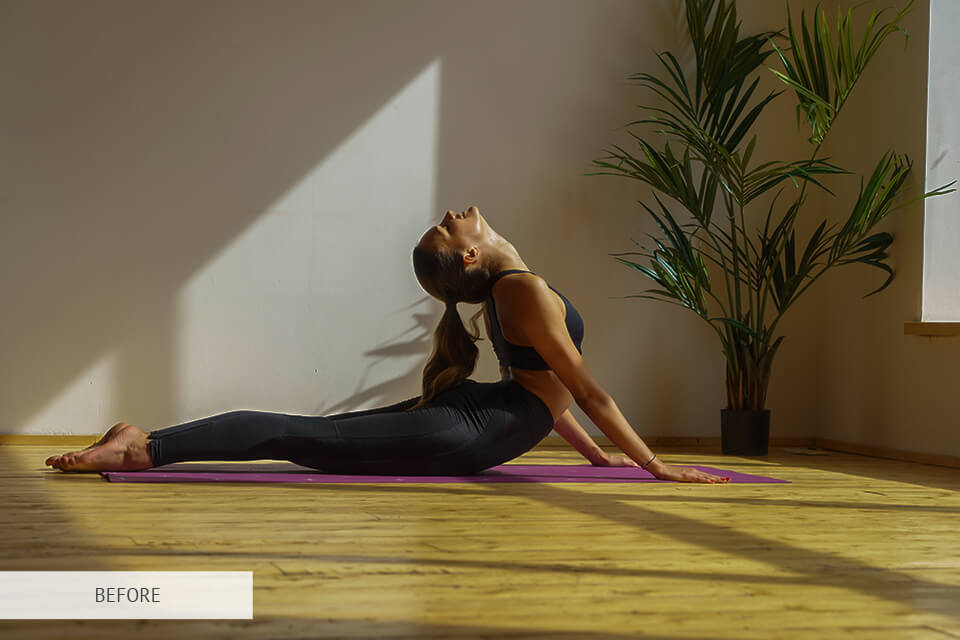
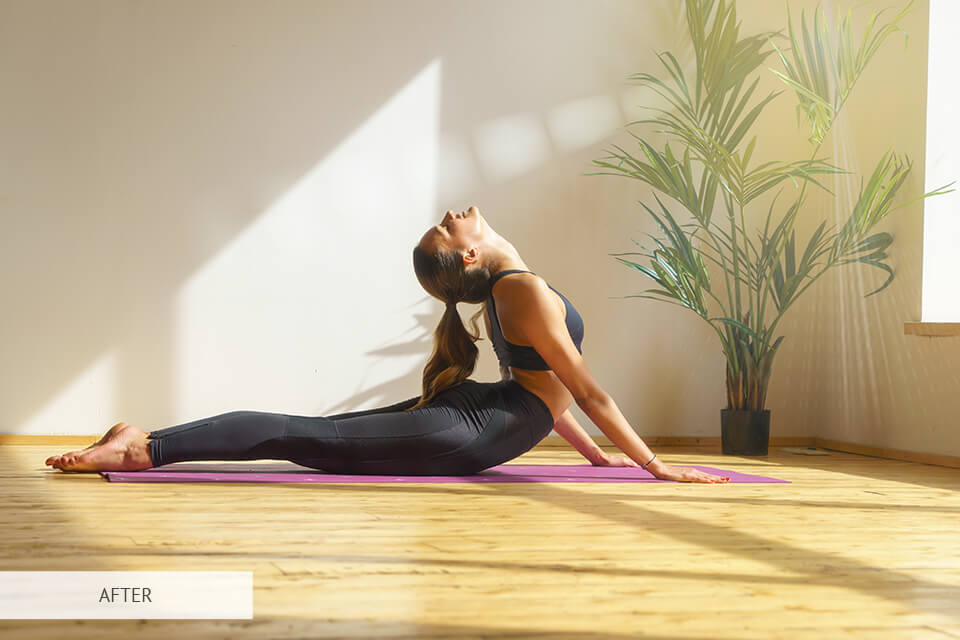
For a stylish and luxurious effect, set this overlay over your yoga image. It looks especially great on sunlit outdoor images and gives a vibrant bronze effect to them.



